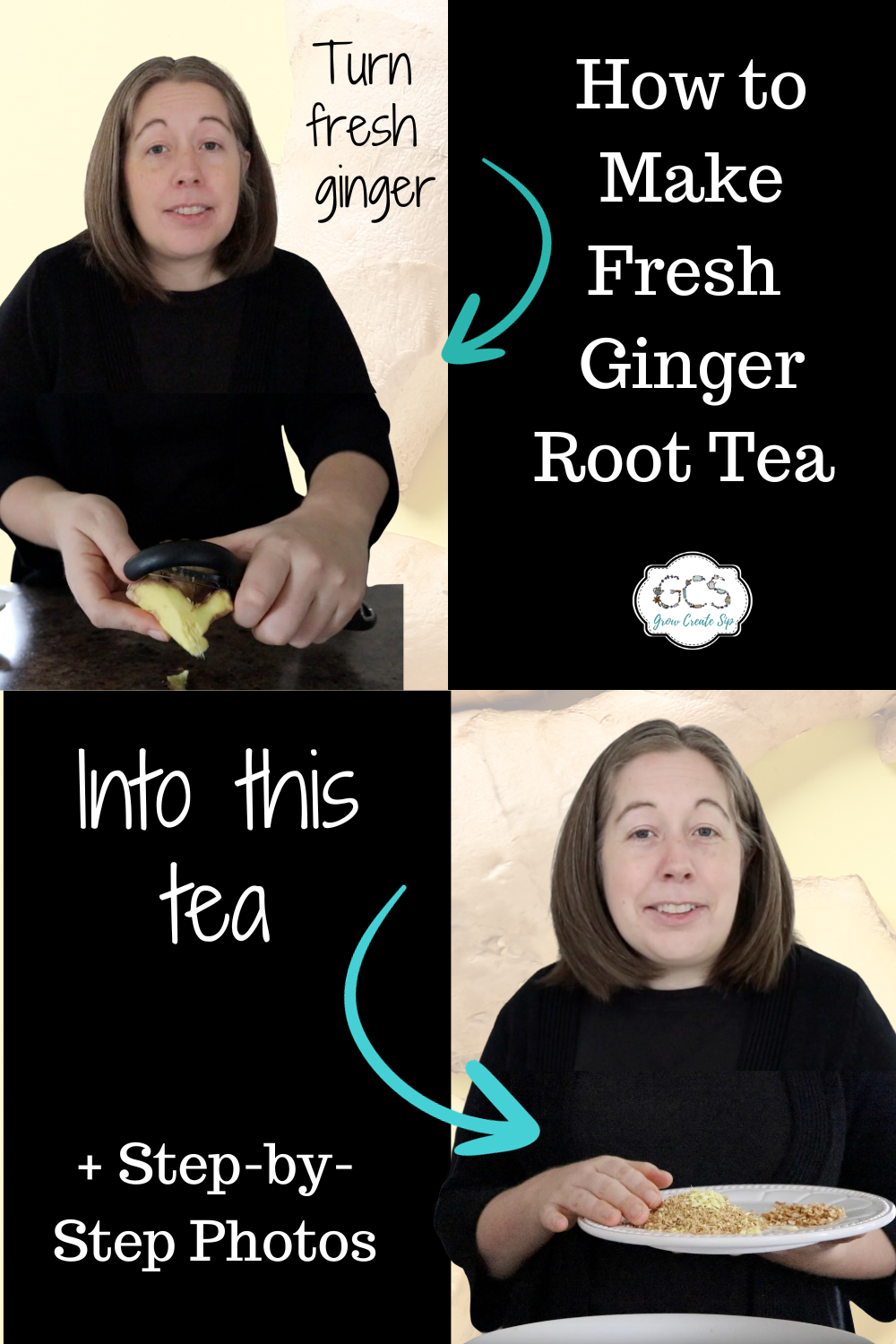How to Make Ginger Tea from Ginger Root: Step-by-Step Guide w/Pictures
Oct 10, 2023
Ginger is a popular ingredient in many tea blends from Golden milk to traditional marsala chai blends. Ginger also has a host of wonderful health benefits and while ginger is great in a homemade natural water flavoring, making tea from fresh ginger has even more health benefits. After a deep dive into the health benefits of ginger I'll cover how to make ginger tea from fresh ginger root -step-by-step including photos! As well as how to grow ginger at home, how to dehydrate ginger as well as how to freeze dry ginger. Let's dive in, shall we?!
What is Ginger Tea?
Ginger tea, as the name suggests, is a soothing and invigorating beverage made from the root of the ginger plant. Ginger, scientifically known as Zingiber officinale, has been used for centuries in herbalism and culinary delights due to its unique flavor and a wide array of health benefits. When brewed into a tea, ginger releases its potent compounds, resulting in a warm, spicy, and slightly sweet tea infusion.
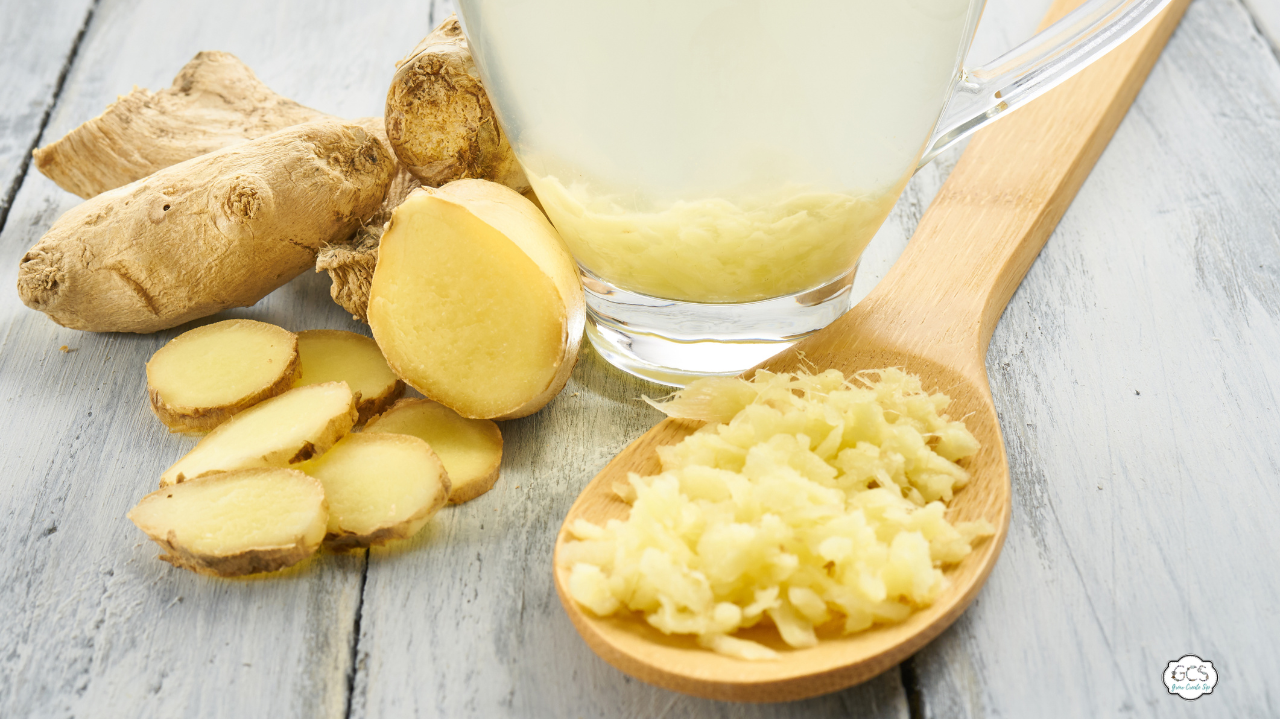
The Legal Stuff
The contents of this blog are made available via St. Fiacre's Farm LLC through Grow Create Sip and Farmhouse Teas and are for informational purposes only. This blog does not constitute medical advice; the content is not intended to be a substitute for professional medical advice, diagnosis, or treatment. Always seek the advice of a qualified healthcare provider with any questions you may have regarding a medical condition. If you think you may be suffering from any medical condition, you should seek immediate medical attention. You should never delay seeking medical advice disregard medical advice or discontinue medical treatment because of information provided by St. Fiacre's Farm, Farmhouse Teas or Grow Create Sip. Reliance on any information provided by this webinar is solely your own risk. St. Fiacre's Farm LLC (along with Farmhouse Teas and Grow Create Sip) is a participant in the Amazon Services LLC Associates Program, an affiliate program designed to provide a means for our team to earn fees for recommending our favorite products! Along with additional affiliate programs not associated with Amazon. We may earn a small commission, at no additional cost to you, should you purchase an item after clicking one of our links. Thanks for supporting us!
Health Benefits of Ginger Tea
Before we dive into the art of blending the perfect ginger tea, let's explore some of the remarkable health benefits associated with raw ginger:
- Digestive Aid: Ginger tea is renowned for its ability to alleviate digestive issues. It can help ease nausea, reduce bloating, and improve overall digestion. Sip on a cup of ginger tea after a heavy meal to promote healthy digestion. A must have for the holiday season!
- Anti-Inflammatory Properties: Ginger contains powerful anti-inflammatory compounds called gingerols. Regular consumption of ginger tea may help reduce inflammation in the body, providing relief from conditions such as arthritis and muscle soreness.
- Immune Booster: Packed with antioxidants, ginger tea can help strengthen the immune system, protecting the body against common illnesses. Incorporating ginger tea into your daily routine may help ward off infections and keep your immune defenses strong.
- Relief from Menstrual Discomfort: Ginger has been used for centuries to alleviate menstrual cramps and discomfort. Drinking ginger tea during your menstrual cycle may help reduce pain and provide soothing relief. Plus it gives another reason to grab a cozy blanket and rest!
- Improved Circulation: Ginger tea has been found to improve blood circulation, promoting better oxygen and nutrient delivery to the body's cells. Enhanced circulation can support cardiovascular health and overall well-being.
Ginger Tea and Pregnancy
Ginger tea is generally considered safe to consume during pregnancy. In fact, ginger tea can be helpful for relieving some of the common discomforts of pregnancy, such as nausea and vomiting which are common issues especially during the first trimester. Ginger tea works by stimulating the digestive system and reducing inflammation. It can also help to increase the production of saliva, which can help to relieve dry mouth, a common symptom of pregnancy. In addition to relieving nausea and vomiting, ginger tea may also help to relieve other pregnancy discomforts, such as headaches, indigestion, and heartburn.
However, it is important to note that ginger tea should be consumed in moderation during pregnancy. Some experts recommend that pregnant women consume no more than 1 gram (1,000 milligrams) of ginger per day. This is equivalent to approximately 4 cups (950 milliliters) of ginger tea.
If you are pregnant and considering drinking ginger tea, it is always best to talk to your doctor, midwife or herbalist first.
How to Make Ginger Tea from Ginger Root
Now that we covered the many health benefits of ginger tea, let's dive into the exciting process of making it from scratch. It only takes 3 easy steps! I'll share more indepth details following this simple recipe!
Step #1 Peel the Ginger Root
Step #2 Grate or Slice the Ginger Root
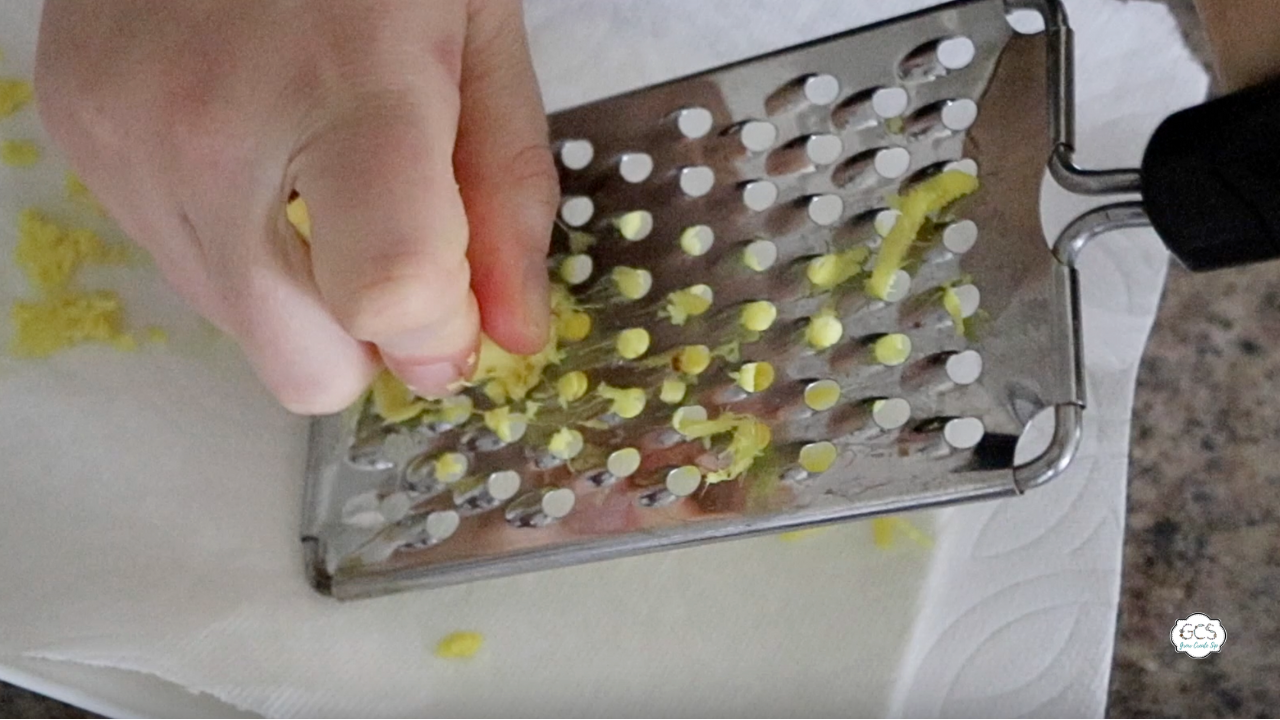
Step #3 Steep 1 Tablespoon in 8 oz of Boiling water for 10-15 minutes. Strain & Enjoy!
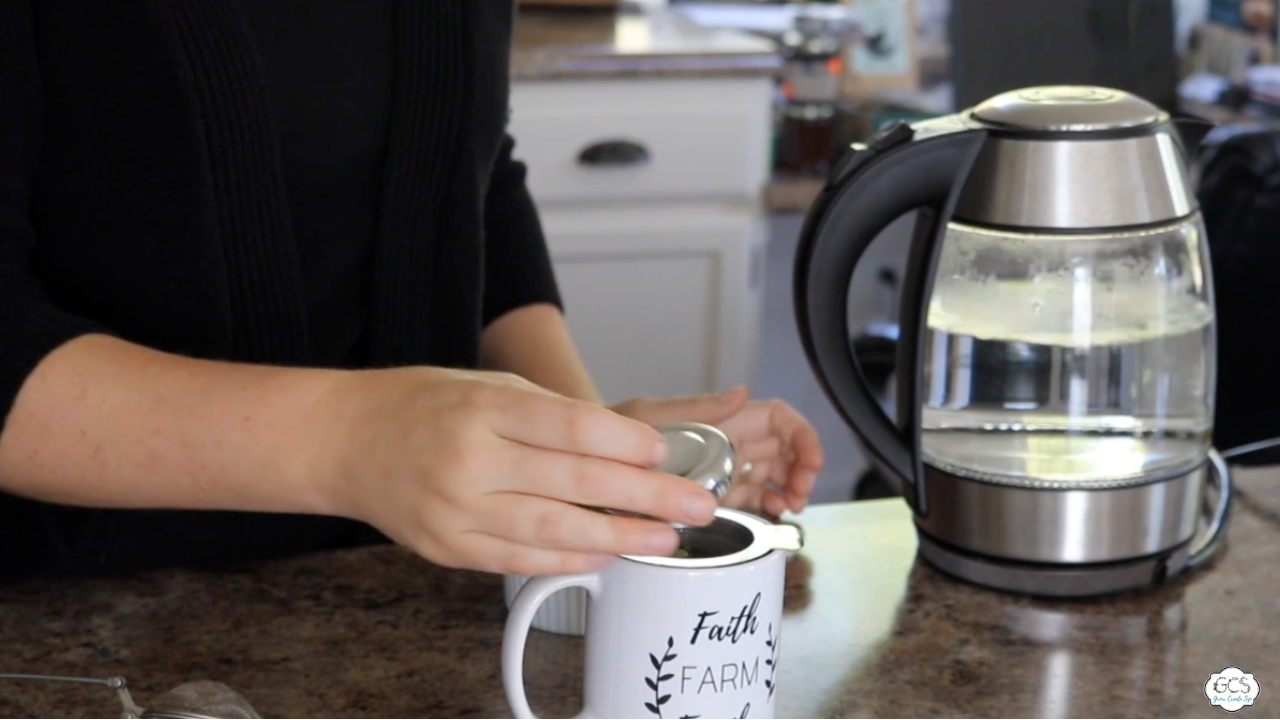
Variations and Flavor Combinations
While plain ginger root tea is delightful on its own, you can experiment with different flavor combinations to suit your taste preferences or medicinal needs as a home herbalist. Here are a few of my favorite variations to try:
- Lemon Ginger Tea: Add a squeeze of fresh lemon juice to your ginger tea for a tangy and refreshing twist. Lemon adds extra vitamin C and enhances the detoxifying properties of ginger. If you want to try before you blend check out this Lemon Ginger Tea at Farmhouse Teas.
- Ginger Peach Tea: Brew a strong ginger tea and add a few slices of dried peaches along with a cinnamon stick and bit of dried licorice root for a subtly sweet and fruity flavor. To test out a bolder brew test out this Persnickety Peach Chai.
- Ginger Lemon Honey Tea: Combine the goodness of ginger, lemon, and honey for a soothing and immune-boosting concoction. Simply add a teaspoon of honey and a squeeze of lemon to your ginger tea. This is a great blend for sipping on while you have a sore throat.
- Turmeric and Ginger Tea: For an extra anti-inflammatory boost, add a pinch of ground turmeric to your ginger tea. Turmeric and ginger work synergistically to reduce inflammation and promote overall wellness. This Golden Milk recipe is a favorite here on the farm!
Remember, the key to finding the perfect flavor combination is to experiment and adjust the ingredients according to your taste preferences. That is why the Farmer calls me a "mad scientist", I'm all about the experimentation!

Additional Tips for Home Herbalists
For my fellow home herbalists here are some additional tips for you when making ginger tea:
- Storing Fresh Ginger Root: If you have fresh ginger root, you can store it in the refrigerator for up to 2 weeks. Ginger root can also be frozen but will not hold it's shape when thawed. Grate frozen ginger root rather than slicing it.
- Storing Dried Ginger: If you are using dried ginger, you can store it in a cool, dark place for up to 12-18 months.
- Adjusting the Strength of Ginger Tea: To make a stronger ginger tea, you can use more ginger root or steep the tea for longer. For a milder ginger tea, you can use less ginger root or steep the tea for a shorter amount of time. The level of spice is all up to you!
- Adding Herbs and Spices: You can add other herbs and spices to your ginger tea, such as turmeric, lemon balm, cinnamon or other chai spices. This way you to experiment with different flavor profiles and enhance the health benefits of your tea.
- Enjoying Ginger Tea: Ginger tea can be enjoyed hot or cold, depending on your preference and the weather. Feel free to experiment with different serving temperatures to find what suits you best. May favorite is served warm!
- Grow Your Own Ginger Root: Ginger root is relatively easy to grow at home. You can explore the joy of cultivating your own ginger plants and have a fresh supply of ginger root whenever you need it.
Grow Your Own Ginger Root
If you're feeling adventurous and want to take your ginger tea experience to the next level, why not try growing your own ginger root at home? Ginger root is relatively easy to grow and can provide you with a fresh supply of ginger all while saving you money on your new favorite tea habit!
Let's grow some ginger:
- Obtaining Ginger Root: Start by obtaining a fresh ginger root from a local grocery store or farmer's market. Look for plump and firm roots with visible "eyes" or small buds.
- Preparing the Ginger Root: Before planting, soak the ginger root in water overnight to help stimulate growth. This step is optional but can enhance the chances of successful sprouting.
- Choosing a Container: Select a wide and shallow container with good drainage. Ginger roots grow horizontally, so a container that allows for spreading is ideal. You can also use a large pot or a raised garden bed in a warm heated greenhouse.
- Preparing the Soil: Fill the container with well-draining potting soil or a mix of compost, sand, and loam. Ensure that the soil is loose and fertile to encourage healthy root development. Ginger doesn't like clay soil!
- Planting the Ginger Root: Place the ginger root with the buds facing up and cover it with about 2 inches of soil. Keep in mind that ginger needs warmth to grow, so choose a sunny spot or consider using a grow light to provide sufficient light for the plant. These are not out door plants in any USDA growing zones other than 9-11.
- Watering and Care: Keep the soil consistently moist but not waterlogged. Avoid overwatering, as this can lead to root rot. Ginger plants appreciate humidity, so mist the leaves occasionally or place a tray of water nearby to increase moisture levels. They are a tropical plant!
- Growing Time: Ginger is a slow-growing plant, and it may take a few weeks for the first sprouts to emerge. Be patient and continue to provide the plant with proper care. As the plant grows, you can gradually increase the amount of water and fertilize with a balanced organic fertilizer.
- Harvesting Ginger Root: After several months, usually around 8 to 10 months, the ginger plant will be ready for harvest. Carefully dig around the plant to unearth the ginger roots. Choose mature roots with a yellowish color and a strong aroma. Harvest only what you need, leaving some roots in the soil to continue growing.
By growing your own ginger root, you not only have a fresh supply of ginger for your tea but also the satisfaction of having a hand in God's creation from start to finish!

Preservation Methods for Fresh Ginger: Dehydrating and Freeze Drying
Dehydrating and freeze drying are two great methods for preserving your fresh ginger root. Using a machine to dehydrate ginger is my favorite but I know many of you are fascinated with freeze drying and so I've provided those directions as well. Both methods make it so you can enjoy the convenience and extended shelf life of ginger in various recipes and culinary creations. Both methods take about the same amount of time.
Dehydrating Fresh Ginger Root: Preserving the Goodness
Dehydrating is one of my favorite preservation methods. Dehydrated ginger root is versatile and can be used in teas, spice blends, and baked goods. Here's a simple process to dehydrate fresh ginger root:
- Preparing the Ginger Root: Rinse and peel fresh ginger roots.
- Slicing the Ginger Root: Slice ginger root into thin, uniform pieces.
- Dehydrating Methods: Choose from dehydrator, oven, or air-drying methods.
Dehydrator:
- Arrange ginger slices on trays in a single layer.
- Set the temperature to 135°F (57°C).
- Dry the ginger for 3-4 hours, or until it is completely dry and brittle.
Oven:
- Preheat the oven to its lowest setting, no higher than 150°F (66°C).
- Place ginger slices on a baking sheet in a single layer.
- Dry the ginger for 1 ½ to 2 hours, or until it is completely dry and brittle.
It is important to note that the drying time may vary depending on the thickness of the ginger slices, the humidity level in your environment, and the type of dehydrator or oven you are using. Be sure to check the ginger regularly to avoid over-drying.
- Storing Dehydrated Ginger Root: Cool ginger slices and store them in an airtight container in a cool, dark place. Properly stored, they can last for several months.
- Rehydrating Dehydrated Ginger Root: Soak ginger slices in warm water to soften before using in recipes that call for rehyderated ginger. Dried ginger may be used as is in teas, ground for use in baking and rehydrated in soups and stews.
Freeze Drying Fresh Ginger: Preserving the Flavor and Nutrients
Freeze drying does a better job at the most flavor and freshness though it must be balanced with the cost of the equipment. Here's a simple process to freeze dry fresh ginger:
- Preparing the Ginger: Rinse and peel fresh ginger root.
- Slicing the Ginger: Slice ginger root into thin, uniform pieces.
- Freeze Drying Methods: Use a home freeze dryer and arrange ginger slices on trays and follow instructions for your specific freezer dryer.
- Storing Freeze Dried Ginger: Transfer freeze dried ginger slices to an airtight container. Remove air and store in a cool, dark place. Oxygen absorbers are usually helpful in making your freeze dried ginger last longer.
- Rehydrating Freeze Dried Ginger: Freeze drying fresh ginger preserves its flavor and nutrients, providing convenience and a longer shelf life. To reconstitute freeze-dried ginger, simply add it to warm water and let it sit for a few minutes. The ginger will absorb the water and soften. You can also add the freeze-dried ginger to other liquids, such as broth, soup, or milk. The consistency of the reconstituted freeze-dried ginger will depend on how much water you add and how long you let it sit. If you add more water and let it sit for longer, the ginger will be softer and more mushy. If you add less water and let it sit for a shorter time, the ginger will be more crunchy and firm. To reconstitute freeze-dried ginger, add 1 tablespoon of ginger to 1/4 cup of warm water and let sit for 5-10 minutes, or until softened to your desired consistency. You can use the reconstituted freeze-dried ginger in a variety of ways, including, adding it to tea or coffee, using it in baking or cooking, adding it to smoothies or yogurt and eating it as a plain ole snack!
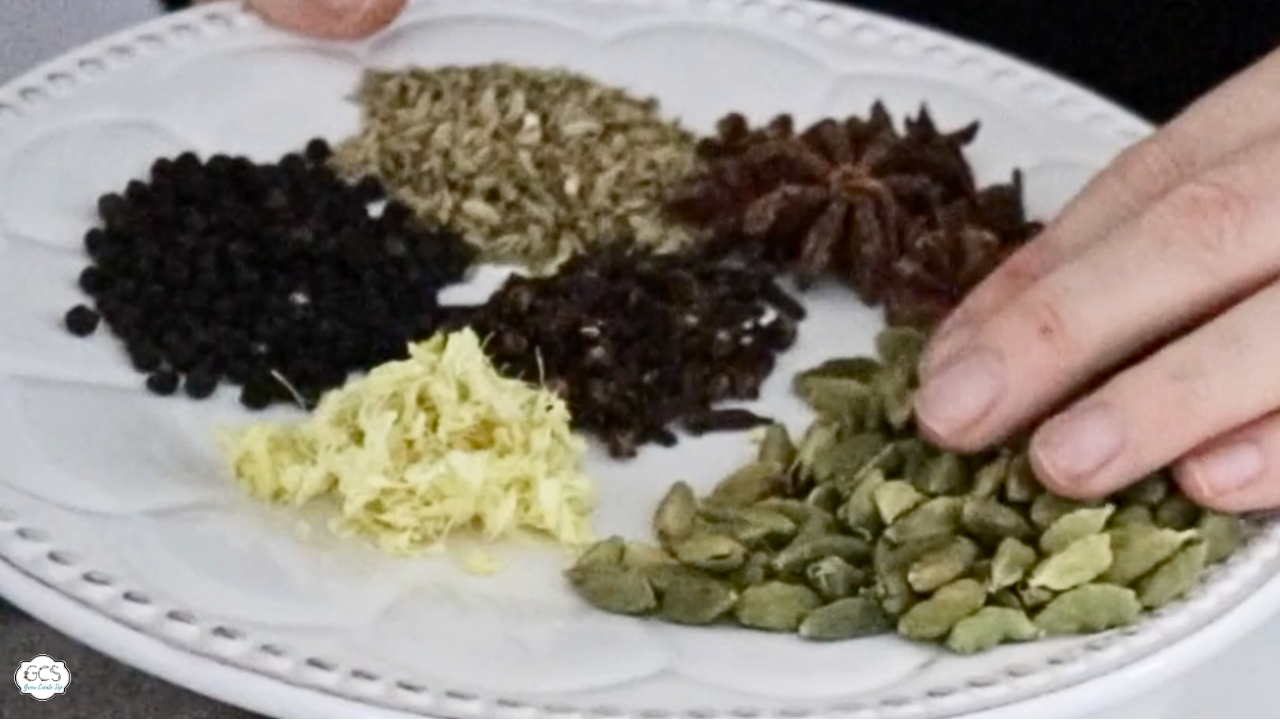
Adding Some Spice to Life
Making ginger root tea at home is a simple and rewarding process that allows you to enjoy the many health benefits of ginger in a delicious and refreshing beverage. Whether you prefer it plain or with added flavors, ginger tea is a versatile and soothing drink that can be enjoyed throughout the year. Ginger is one of my top herbs that I keep on hand for digestive issues, cold and flu season and for my favorite marsala chai! If you loved learning how to make a simple ginger root tea, I'd love to invite you to our free tea blending workshop that shows you two ways you can blend this ginger root into tasty in-depth tea recipes.
Before you go, though, I'd love to know, have you dehydrated any tea ingredients before? If so what were they and how did it go? Share below in the comments and I can't wait to see what your experiences have been!
Additional Tea Blending Recipes:
- How to Blend Tea for Weight Loss
- How to Blend Sea Moss Tea
- How to Make Mushroom Tea
- Best Tea for a Cold
- Calendula Tea Benefits
- Rose Hip Tea Benefits
- 10 Herbs to Grow for Tea
